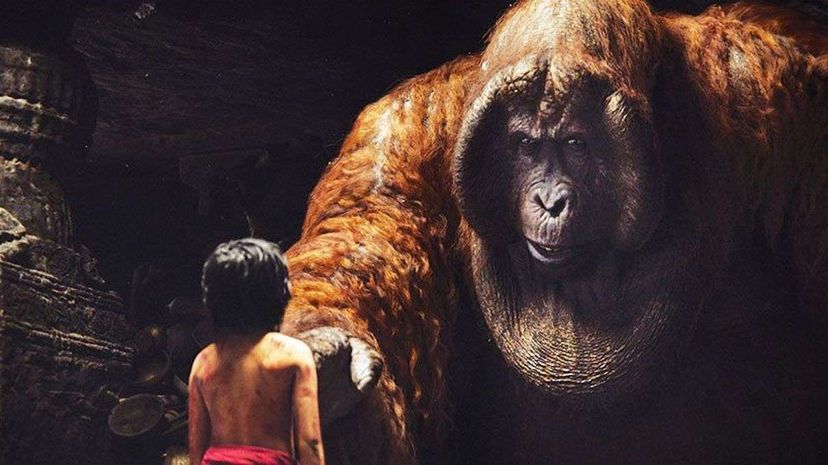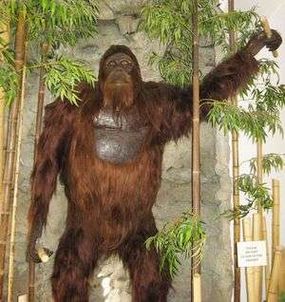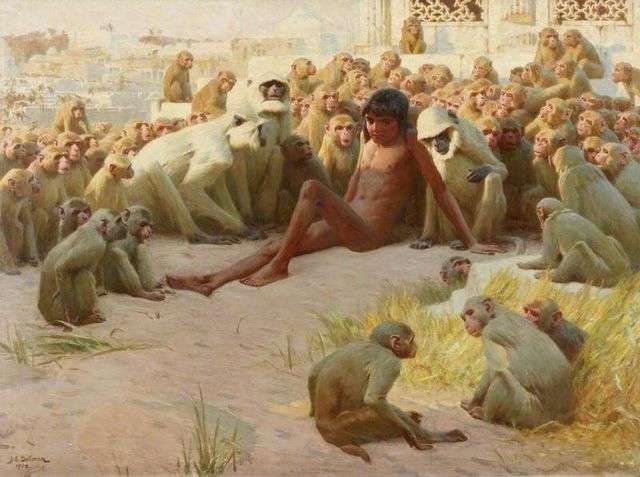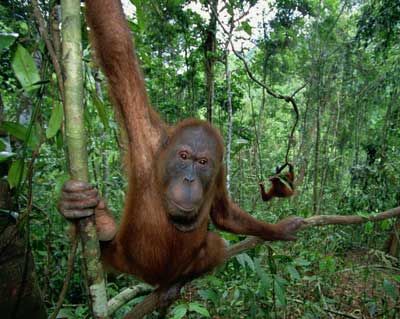
Key Takeaways
- Gigantopithecus, an extinct giant ape that lived in Southeast Asia, stood over 10 feet (3 meters) tall and weighed more than 1,200 pounds.
- Fossil evidence suggests that Gigantopithecus primarily lived in forested areas and its extinction was likely due to climate change that transformed forests into savannas, reducing its food supply.
- The character King Louie in Disney's "The Jungle Book" was inspired by Gigantopithecus, as orangutans are not native to India.
In Disney's new live-action-meets-CGI movie adaptation of "The Jungle Book," the feral child Mowgli meets a giant ape named King Louie. Although Louie looks like a giant orangutan, the character design was actually based on a huge primate called Gigantopithecus who once inhabited prehistoric India.
Why include an extinct ape in a modern story? When Disney created the 1967 animated classic film on which this year's film is based, the animators wanted to stay as true to Indian flora and fauna as possible while creating a new character not found in Rudyard Kipling's original 1894 collection of stories. However, orangutans weren't native to India — but Gigantophithecus was, if even only in the past.
Advertisement

Now extinct, the largest Gigantopithecus was Gigantopithecus blacki. It was estimated to be more than 10 feet (3 meters) tall and weigh more than 1,200 pounds (544 kilograms), characteristics scientists pieced together after discovering teeth and jaw bones belonging to the species in the wilds of China, Vietnam and India, as well as traditional apothecaries that sold primate molars.
Large primates are still spotted across the globe. Whatever name you know them by — bigfoot, yeti, sasquatch — the lore surrounding these mythological creatures may be tied to a real giant ape that roamed parts of southern Asia about 12 million years ago.
Could a remnant Gigantopithecus be behind modern bigfoot sightings? "It seems very unlikely," says David Mizejewski, naturalist, author, wildlife expert and co-host of several NatGeo television series. "We have precious little physical evidence of Gigantopithecus (aside from jaw bones and teeth) and much of what we think we know about it could change with the discovery of additional fossils. It seems, though, that they were extinct long before modern times and there's no evidence of them in North America. Perhaps ancient humans in Asia did encounter them and formed legends of giant apes that survive in human cultures today."

Although Gigantopithecus may not be the answer to sasquatch sightings, clues about its demise could be key to preserving other species of living apes. In a new study published in the journal Quaternary International, professor Friedmann Schrenk and his colleagues at the Senckenberg Research Institute in Germany examined the giant ape's fossilized tooth enamel to make determinations about its diet and how this might have impacted its extinction.
"Our results indicate that the large primates only lived in the forest and obtained their food from this habitat," says Herve Bocherens of the Senckenberg Center for Human Evolution and Palaeoenvironment at the University of Tubingen, which contributed to the study.
As the climate changed and forested areas became savannas, food became scarce and the giant apes eventually died off.
"The wildlife either adapted, moved to new areas or suffered decline or extinctions," Mizejewski says. "This has happened to countless species over the history of life on Earth."
And it could be happening now. "All modern apes are listed as endangered," Mizejewski says, "and a major reason for that is destruction of their habitat. Basically, humans are drastically altering the apes' habitat by logging, burning or converting it to agriculture. This human-caused habitat loss is, of course, happening far faster than habitat loss through natural factors, but the result is the same."
Advertisement

